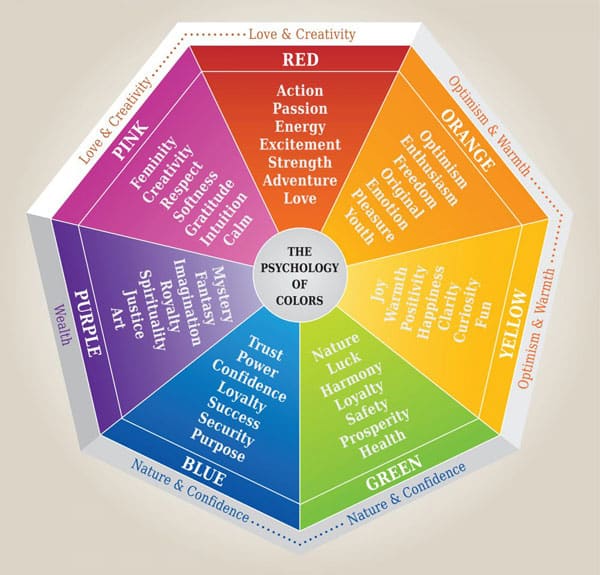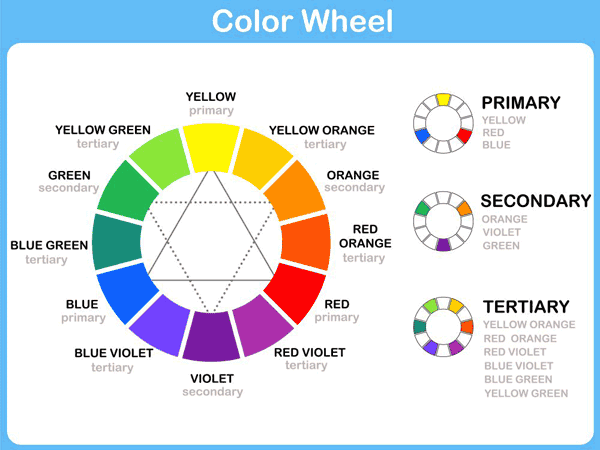
We all know that direct mail is incredibly popular. Study after study proves that people love to receive relevant, attractive, and personalized mail. Brochures are a versatile solution to your direct mail needs. They are compact, can be stacked in offices or passed out by hand, act as self-mailers, and hold a ton of information. A beautiful brochure is the cornerstone of any marketing campaign but finding those perfect brochure colors can be difficult. Thankfully, by utilizing just 3 color combinations, you can pull together a snappy new brochure design in no time!
The 3 color combination is popular with major companies because of its simple application and visual appeal. Using only a 3 color palette keeps you brochure on point and easy to design. You can also apply this design principle to a 3 color logo or other 3 color design for other direct mail materials or swag.
Know Your Objective
Before we delve into design, let’s focus on your goals. What do you hope to accomplish with this brochure? What is your message? What impression do you want to create? What ultimate results do you want to achieve? By using these questions as your style guide, the design process will be effortless and your brochure will stay on message with your brand.

Know Your Audience
As always, consider your target audience when picturing your design. Is this brochure for your usual clientele or is it for a specific sub-group? What are their wants? Do they have any pain points? Design your pitch with your audience in mind and your work is half done already.
Your Brochure Color Scheme
The colors that you choose can significantly alter the effectiveness of your brochure. Colors can sooth, irritate, energize, infuriate, bolster, or boost, so choose yours carefully.
What Is Your Brand Personality?
When picking colors to represent your brand, select ones that match the mood of your company.
What does that mean? Well, does your company have branded colors? What color is your logo? If your company doesn’t have branded colors, the you can use this exercise to get started. And if your company has a main branded color, then start with it and use our tutorial to update your look.
First write down an adjective that best describes your company. Is your company energetic? How about passionate? Rugged? Suave or strong? Intelligent or youthful?
Once you’ve written it down, compare your adjective to the chart shown here:

Find the word that most closely matches your word and the color associated with it. That color is going to be your main color.
Now, for your paired colors, you will be choosing from two complimentary colors and then a neutral. What is a complimentary color, you ask?
The Basics (A Very Quick Tutorial)

Basically, there are three types of color: primary, secondary, and tertiary. Primary colors are red, yellow, and blue; whereas secondary colors are the colors created when you blend the primary colors (in this case, orange, green, and purple). Tertiary colors are blends of primary and secondary colors and have two-word names (like red-orange, yellow-green, blue-purple)
Complimentary (sometimes called contrasting) colors are ones that are opposite of each other on the color wheel. An example would be red and green.
colors can also be categorized as warm or cool. Warm colors have red undertones, whereas cool colors have blue undertones. Warm colors can be welcoming and cool colors can be soothing. Matching colors that are warm or cool to the mood of your campaign can improve the appeal of your brochures.
Now, back to your choices. Let’s say for example that the word that you picked for your company was ‘enthusiastic’, and so you chose orange as your main color (a very popular choice by the way!)
To find your complimentary colors, take another look at the color wheel in The Basics (A Very Quick Tutorial) section. Remember, the complimentary colors are directly opposite the color that you choose. So, in this case, your contrasting colors will be blue-green, blue, or blue-violet.
Well, that was easy! So, are we all done here? …no? Oh, right.
Remember those warm and cool colors? As you can see on that color wheel, the primary (red, yellow, blue) colors are in a triangle, so all of the blue colors end up on one side and all of the red colors end up on the other, with yellow and purple as sort of a DMZ. Cool on one side, warm on the other. Do you want a friendly and warm color scheme? Try orange and blue-violet. Or go cool and upbeat with orange and blue-green.
Finally, your choose your neutral color. Orange and blue will really POP but you don’t want them to be too overwhelming and a neutral tone provides some visual relief. Neutrals are usually white, gray, or black, but you can pick a hue (a color that has white mixed in) that compliments your main color too.
Restrain Your Fonts
With so many choices available, it can be easy to get carried away. But you want to attract your audience, not overwhelm them. Pick something fun, funky, or even a more elaborate font, but save them for your banners or headlines. Balance them with more conservative fonts for the body of your material and remember to use a dark color over a light color or vice versa for your fonts.
What’s Your Point?
With so many balls in the air, it can be easy to lose sight of your message. To stay on topic during the design process use your headlines as guidelines. Base them off of your goals to keep your objective in mind. Stay focused and remember your audience. Don’t get bogged down in a slew of information. No matter how relevant the material, if it’s boring your audience may lose interest. With that in mind, avoid long words and sentences and keep the acronyms to a minimum. Keep it short and sweet. Short sentences keep the momentum going. Remember, brevity is the soul of wit.
Set The Tone
Keep your overall look on point by choosing visuals that share similar tones as your main or complimentary colors. Pick images that match your mood. Is your tone warm? Then think upbeat, smiling faces and sunshine. Did you go cool? Then go confident, professional, or edgy. And always remember, if it doesn’t enhance your brand, cut it loose.
Quality Materials
Even when you are on a budget, investing in quality materials is a must. Thin, flimsy, or cheap feeling paper and weak inks can negatively impact the appeal of your brochure and degrade the value of your message. Psychologically, if your customer thinks that you have put a lot of time and effort (and money) into your presentation, then the information must be that much more important. Appeal to their sense of worth and give your brochure some weight. Even a small increase to a heavier bonded weight of card stock will add gravitas to your brochure and your message.
With so many options available from Printing for Less, you don’t have to break the bank but you show your customers that you think that they are worth it. Talk to an expert today at 800-930-6040 to get started on brochure design.
